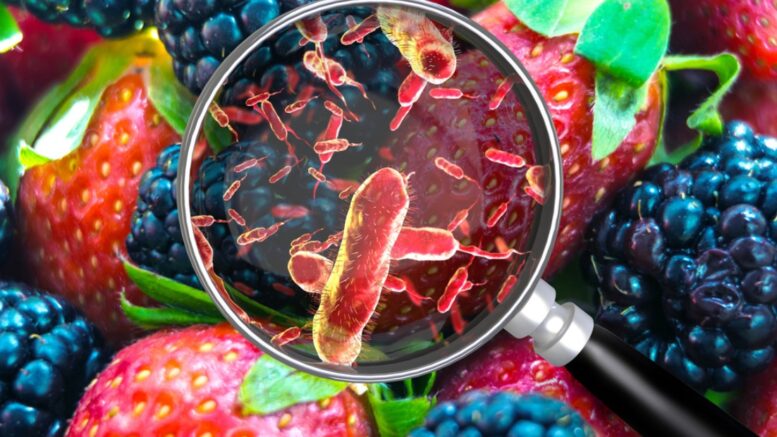Whenever you walk down the grocery aisle, you would always choose food products from companies you have relied on for many years. Even if the product is pricier than others, you just feel safer by going with these particular brands.
This kind of assurance usually comes from a company’s reputation for providing safe and high-quality food. But this entails a lot more than the average consumer assumes.
No head of the family would want to have any household member fall ill because of contaminated food. Unfortunately, these things happen all the time. An estimated 600 million people worldwide get sick after eating contaminated food every year, resulting in 420,000 deaths.
As much as food manufacturers and distributors must account for problems like this, consumers must also do their part to reduce their risk of falling ill due to contaminated food. Proper preparation and storage protocols are part of this.
But what exactly are food contaminants, and how can they affect you? This post will explore the different types of food contaminants and the illnesses you can get from them. Read on to be informed.
You can avoid food contaminants by paying special attention to germ hot spots in your restaurant. Please see the following resource for more information.
Provided by FOG Tank – heated soak tank for sale
Different Types Of Contaminants
Contaminants refer to anything that is not meant to be in something, which in this case is the food we eat. They can cause a wide range of problems when ingested. Here are the most common types you may encounter:
- Physical contaminants: These are foreign objects that can find their way into food, such as glass shards, metal fragments, or plastic. These contaminants can cause injury if ingested and may require medical treatment. Many food processing facilities utilize state-of-the-art equipment like TDI food x-ray inspection systems to screen them out of food products at any point of distribution or packaging.
- Biological contaminants: Also known as microbial contaminants, tiny organisms such as bacteria, viruses, and parasites can contaminate food and cause illness. These contaminants can enter the food supply through various means, including poor handling, processing practices, and environmental contamination. Bacteria is the most common culprit. It can cause multiple symptoms, including nausea, vomiting, diarrhea, and abdominal cramps. In severe cases, bacterial contamination can lead to more serious illnesses such as kidney failure or meningitis.
- Chemical contaminants: These are substances that can get into food due to pollution and poor agricultural practices or processing methods. Examples include pesticides, heavy metals, and industrial chemicals. The effects of chemical contaminants on human health depend on the specific substance and the level of exposure. Some chemical pollutants can cause acute symptoms such as dizziness, nausea, and vomiting, while others may have longer-term effects such as cancer or organ damage.

How It Enters The Supply Chain
Contamination usually happens in the following ways:
- Environmental contamination: Some food contaminants, such as heavy metals, can enter the food chain through environmental pollution. For example, if a factory releases toxic chemicals into the air or water, these substances may seep into the soil and contaminate crops. Some of them can transfer to the food through agricultural practices like pesticides. These are chemicals that kill insects that would otherwise feed on crops. Most of them can also harm humans, especially at high concentrations.
- Poor handling and storage: Food can become contaminated if not handled or stored properly. For example, if food is left at room temperature for an extended period, it can become a breeding ground for bacteria. Another way is through cross-contamination. This occurs when harmful bacteria or other contaminants are transferred from one food to another due to poor hygiene or improper storage and practice. This happens if raw chicken is not stored properly and comes into contact with other foods. Or, you use one chopping board with different ingredients that you prepare.
- Processing practices: Food can become contaminated during processing if the equipment or facilities are not properly cleaned or if the food comes into contact with other contaminated substances.
How Food Contamination Affects Your Health
Illnesses from food contaminants can range from mild to severe. Some symptoms may include nausea, vomiting, diarrhea, abdominal cramps, fever, and fatigue. In extreme cases, foodborne illness can lead to severe complications such as kidney failure, neurological damage, and even death.
There are many different types of foodborne illness, each caused by a specific type of contaminant. Some of them are:
Salmonella
This bacterial contamination can cause symptoms like fever, abdominal cramps, and diarrhea. Salmonella can be found in raw or undercooked poultry, eggs, meat, and unpasteurized milk and juices. The symptoms usually appear within 12-72 hours after consuming contaminated food and can last several days.
Although most people recover from salmonella infection, it can lead to more serious complications such as kidney failure or meningitis. This usually afflicts young children, older adults, and people with compromised immune systems.
E. coli
This bacterial contamination is commonly found in undercooked beef, raw milk, and contaminated water. Symptoms of E. coli infection include abdominal cramps, diarrhea, and fever. These usually manifest within three to four days after consuming contaminated food and can last up to a week. In severe cases, E. coli infection can lead to more serious complications such as anemia.
Listeria
This bacterial contamination can cause serious illness. Listeria can be found in raw milk, soft cheeses, and deli meats. Symptoms of listeria may appear within a few days to a few weeks. In severe cases, listeria infection can lead to meningitis or sepsis. Pregnant women, newborns, and older adults are the most vulnerable to this condition.

Norovirus
This viral contamination is one of the most common causes of foodborne illness. It can be found in many foods, but especially in raw shellfish and contaminated water. Symptoms of norovirus infection include diarrhea, vomiting, and stomach pain. They usually appear within 12-48 hours after consuming contaminated food and can last up to a few days.
In most cases, norovirus infection does not cause serious complications, but it can lead to dehydration, especially in young children and older adults.
Hepatitis A
This viral contamination is found in contaminated food and water and can cause liver inflammation. The symptoms include fever, fatigue, loss of appetite, nausea, abdominal pain, and jaundice. They appear within a few weeks to several months after exposure to the virus. In rare cases, it can lead to liver failure.
Cancer
Exposure to certain chemicals and substances found in contaminated food products may increase the risk of developing cancer. Certain pesticides are the usual culprit, causing conditions such as leukemia, non-Hodgkin lymphoma, and brain cancer.
Organ Damage
Contaminated food can cause a range of health effects, including organ damage. Hepatitis and E. coli can cause liver damage, while salmonella can harm the kidneys. Listeria can lead to inflammation of the brain in some cases, while foods with lead and mercury can cause severe damage to the nervous system. Shards of glass, pieces of metal, and even small rocks that accidentally get into the food can lead to internal laceration when ingested.
All of these highlight the importance of safe food handling practices. If you experience any of these symptoms, visit a doctor immediately for treatment. Bring up what you ate and how you prepared it during the examination in case that’s the cause.
Healthy Food Is Clean Food
Food contaminants can have a wide range of adverse effects and come from a variety of sources. It’s essential to be aware of these and take steps to reduce the risk of exposure by carefully inspecting the food you buy, only buying from reputable sources, and following food safety practices at home at all times. If you suspect a foodborne illness, seek medical attention and report it to your local health department.
